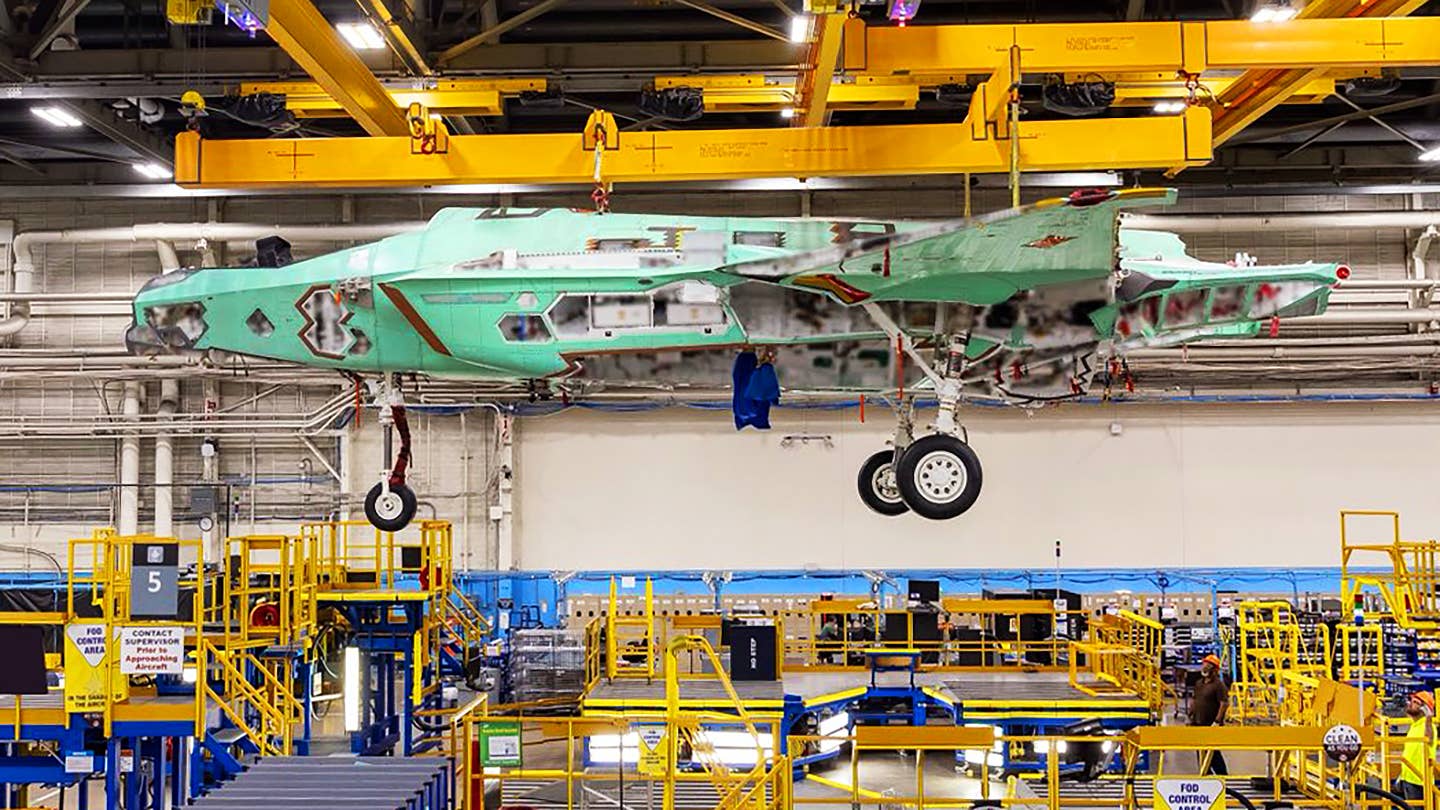Poland’s Future F-35s Have Been Officially Named “Husarz”
The name for Poland’s F-35s, chosen via a public competition, draws on the nation’s military history for inspiration.

Following a public competition to choose the name of its future F-35A Joint Strike Fighters, Poland has revealed that these aircraft will be locally known as Husarz, or hussars. This name pays homage to a very specific cavalry unit from the country's military past.
The winning name was announced earlier today by the General Staff of the Polish Armed Forces. The competition itself began on April 12, and entrants were encouraged to submit their name suggestions via the General Staff's competition adverts on Facebook and X. In all, the Polish Air Force is set to receive 32 F-35As from Lockheed Martin, with deliveries expected to begin this year through 2030.
As the General Staff of the Polish Armed Forces indicated, almost 800 individual names were submitted. The first stage of the competition, spanning April 12-18, involved identifying the top five most popular name ideas. These were revealed as 'Halny,' 'Husarz,' 'Harpia,' 'Dracarys,' and 'Duch' on April 22. Facebook and X users were asked to choose their favorite name of the five, of which 'Husarz' came out on top.
Traditionally, Polish military aircraft have tended to be named after birds, PolandDaily24 reports — including Sokół helicopters and Jastrzębie F-16 multirole fighters. However, the top five names selected represented a diverse array of options from mythology, fiction, and Polish military history. 'Dracarys,' for example, means 'dragonfire' in old Valerian; a fictional language part of George R. R. Martin's A Song of Ice and Fire book series adapted for television by HBO. 'Harpia,' translated as 'harpy' in English, refers to the half-human, half-bird creature that originates in Ancient Greek and Roman mythology. Moreover, 'Duch' means 'Ghost,' while 'Halny' refers to a foehn type of mountain wind; a well-known phenomenon in some parts of Poland.
It seems fitting that 'Husarz' was ultimately selected as the winning name for Poland's future F-35s, given its nod to the historical Winged Hussars cavalry of the Polish-Lithuanian Commonwealth. The first hussar formation was formed in 1503 by the Polish parliament. The Winged Hussars were considered the most elite branch of the country's armed forces, with many being selected from the Polish nobility. It was between the Battle of Lubiszewo (1577) and the Siege of Vienna (1683) which constituted its 'Golden Age'; with the the hussars winning over 16 major battles during that time against both Ottoman and Russian forces.
In the 18th century, the Winged Hussars were relegated to ceremonial roles before being disbanded. Yet they have remained an important part of Poland's military heritage since then.
In officially naming its future F-35s, Poland has joined one of just a few countries to have come up with a national name for the type. The Israeli Air Force refers to its F-35I variant by the Hebrew name Adir, meaning 'Mighty One.' At least some in the U.S. Air Force also call their F-35As Panthers, as well.
As mentioned above, the Polish Air Force is currently set to take delivery of its first F-35 Husarz by the end of this year, which is expected to feature low-visibility checkerboards, the Polish equivalent of a roundel, instead of traditional red and white ones.
Construction of Poland's initial F-35A, AZ-1, began with the fabrication of a portion of the wing assembly at Lockheed's F-35 center wing assembly line in Marietta, Georgia, in spring 2023. Just today, the company released video confirming that it is now standing with weight on its wheels for the first time at the final assembly plant in Fort Worth, Texas.
According to Lockheed, Poland's fleet of F-35 fighters will be equipped with Technology Refresh 3 (TR-3) and, at least eventually, Block 4 capabilities. TR-3 constitutes the F-35's ‘computer backbone'; a set of hardware and software changes that effectively underpin the F-35’s future capabilities, known collectively as Block 4. The development and testing of TR-3 has proved something of an ongoing saga for Lockheed, which you can read more about here.
Once in service, the F-35s will join the Polish Air Force's Block 52+ F-16C/D Viper and MiG-29 Fulcrum fighters and Su-22 Fitter swing-wing combat jets. It should be noted that, aside from its future F-35s, Poland is also receiving South Korean FA-50GF light combat jets, and has expressed interest in procuring F-15EX Eagle II fighters.
This comes as the country is in the midst of wider defense-related spending spree, in light of growing concerns from Russia following its all-out invasion of Ukraine in early 2022, which you can read more about here. It now spends 4.23 percent of its GDP on its armed forces, more than double the NATO target of 2 percent, of which it is a member. Moreover, Poland is very publicly pushing to host nuclear weapons. This began before the war in Ukraine broke out, but the conflict has only accelerated and augmented the Polish government's existing plans.
Given the broader context of the current security environment for Poland specifically, it seems apt that the Winged Hussars have been 'called up' once again to help defend the country in the near future.
Contact the author: oliver@thewarzone.com
